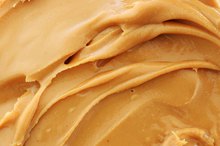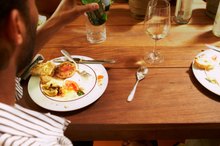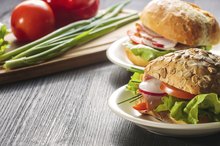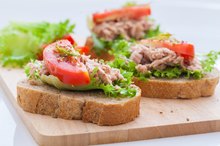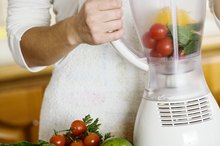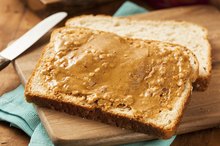Diet After Stomach Ulcer Cauterization
Gastric and esophageal issues can be alleviated by cauterization, a process where affected cells are removed and burned electrically or chemically to prevent recurrence. Stomach ulcers are often treated similarly. The cauterization procedure usually does not have long-term side effects; however, it may be difficult to consume certain types of food following cauterization due to stomach or throat pain. While an individual’s diet need not change following cauterization for stomach ulcers, certain dietary changes may help an individual to avoid pain or discomfort, promote healing and avoid recurrence.
Hot or Spicy Foods
Avoiding hot, spicy or acidic foods has long been thought to help cure stomach ulcers. However, studies have demonstrated that this is not necessarily the case—the consumption of spicy foods probably has little to do with the formation or growth of peptic ulcers. However, such foods may cause other issues, such as acid reflux, which will be a particular discomfort in the days following ulcer surgery. If you have difficulty consuming spicy or acidic foods, avoidance following surgery may be the right choice. Once you begin feeling better, slowly reintroduce them into your diet—they won’t damage your stomach or cause more ulcers to form.
- Avoiding hot, spicy or acidic foods has long been thought to help cure stomach ulcers.
- However, such foods may cause other issues, such as acid reflux, which will be a particular discomfort in the days following ulcer surgery.
Eating Schedule
Diet Following a Sigmoid Colectomy
Learn More
Your normal meal schedule may change drastically following cauterization of stomach ulcers. In fact, most types of stomach surgery result in meal time changes—patients sometimes experience the loss of appetite, or feel that they get full much more quickly. Eat as you feel comfortable, and eat the foods that make your feel comfortable, but don’t overdo it. Your body may have to adjust to certain types of foods after ulcer cauterization, and it may require a week or two of small, infrequent meals to get back to your normal daily eating habits. Talk with your doctor about what schedule is right for you.
- Your normal meal schedule may change drastically following cauterization of stomach ulcers.
- Your body may have to adjust to certain types of foods after ulcer cauterization, and it may require a week or two of small, infrequent meals to get back to your normal daily eating habits.
Fiber
The lack of fiber in a diet, in addition to high consumption of refined sugar, fats, and oils, are thought to be related to the formation of stomach ulcers. Therefore, it is important to avoid these problem areas and increase your intake of fiber following surgery. A diet high in fiber has also been demonstrated to aid in healing following ulcer cauterization surgery, and lessens the chance of a relapse 1. Even if it is difficult for you to cut out alcohol or fat from your diet, do yourself a huge favor and add additional fiber into your meals, or take a fiber supplement. You might be surprised at how much better you’ll feel, and how quickly you start feeling that way.
- The lack of fiber in a diet, in addition to high consumption of refined sugar, fats, and oils, are thought to be related to the formation of stomach ulcers.
- Even if it is difficult for you to cut out alcohol or fat from your diet, do yourself a huge favor and add additional fiber into your meals, or take a fiber supplement.
Related Articles
References
- Diet After Surgery
- Cleveland Clinic. Peptic ulcer disease: Management and treatment. Updated January 29, 2016.
- American College of Gastroenterology. Peptic ulcer disease. Updated December 2012.
- National Institute of Diabetes and Digestive and Kidney Diseases. Symptoms & causes of peptic ulcers (stomach ulcers). Updated November 2014.
- Cleveland Clinic. Peptic ulcer disease. Updated January 13, 2016.
Writer Bio
Alexis Writing has many years of freelance writing experience. She has written for a variety of online destinations, including Peternity.com. She holds a Bachelor of Arts in communication from the University of Rochester.


